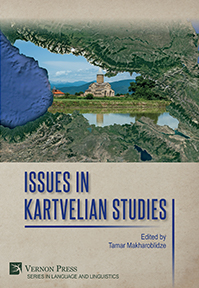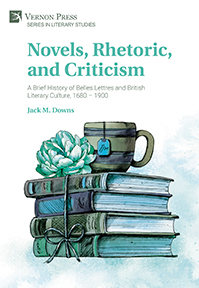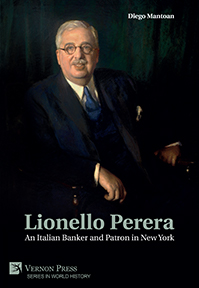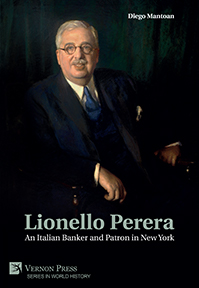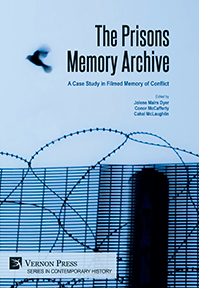Search
Browse
by Publication status
by Subject
Anthropology (26) Art (171) Business and Finance (38) Cognitive Science and Psychology (63) Communication and Journalism (50) Economics (116) Education (71) History (167) Human Geography (23) Interdisciplinary (43) Language and Linguistics (178) Law (15) Music Studies (18) Philosophy (222) Political Science and International Relations (127) Sociology (399) Statistics and Quantitative Methods (21)by Series
Series in Literary Studies (62) Series in Philosophy (57) Series in Education (49) Series in Sociology (42) Series in World History (31) Series in Politics (30) Bridging Languages and Scholarship (25) Series in Language and Linguistics (25) Cognitive Science and Psychology (20) Series in Philosophy of Religion (20) Series in American History (19) Series in Art (19) Critical Perspectives on Social Science (16) Series in Cinema and Culture (16) Curating and Interpreting Culture (15) Series on the History of Art (14) Series in Anthropology (13) Economics (13) Series in Business and Finance (12) Series in Critical Media Studies (12) Series in Music (12) Series in Performing Arts (9) Philosophy of Personalism (8) Series in Communication (8) Series in Law (8) Series in Economic Methodology (7) Series on Climate Change and Society (7) Classics in Economics (6) Series in Economic Development (6) Women's Studies (6) Philosophy of Forgiveness (5) Series in Built Environment (5) Series in Economic History (5) Series in Philosophy of Science (4) Series in Social Equality and Justice (4) Series on the History of Science (4) Serie en Sociología (3) Series in Contemporary History (3) Series in Creative Writing Studies (3) Series in Design (3) The Interdisciplinary Built Environment (3) Series in Heritage Studies (2) Series in Innovation Studies (2) Serie en Ciencias Políticas (1) Serie en Comunicación y Medios (1) Serie en Entorno Construido (1) Serie en Estudios Culturales (1) Serie En Estudios Literarios (1) Serie en Filosofía (1) Serie en Música (1) Series in Classical Studies (1) Series in Economics of Technological Change (1) Series in Urban Studies (1)by Language
English Spanishby Author
Browsing with filters

Issues in Kartvelian Studies
Edited by
Tamar Makharoblidze, Ilia State University, Georgia
Availability: In stock
299pp. ¦ $79 £65 €74
Georgia is a part of the Caucasus region, located at the intersection of Eastern Europe and Western Asia. It is bounded to the west by the Black Sea, to the north and east by Russia, to the south by Turkey and Armenia, and to the southeast by Azerbaijan. Georgia covers a territory of 69,700 square kilometres (26,911 sq mi), and its approximate population is about 3.716 million. Georgia is a motherland of Iberian or Kartvelian languages: Georgian, Svan, Megrelian and Laz, a language family native to the South Caucasus. This diverse collection is devoted to a wide range of linguistic works, such as descriptive studies of the Kartvelian languages and Georgian sign language, along with some theoretical contributions, dialectology, lexicography, psycholinguistics and computational linguistics, as well as history, ethnography, religion and educational issues. These articles are not only the best studies of Kartvelology but also clearly show its contribution to world science.
Novels, Rhetoric, and Criticism: A Brief History of Belles Lettres and British Literary Culture, 1680 – 1900
Jack M. Downs, Washington State University Health Sciences Spokane
Availability: In stock
158pp. ¦ $53 £42 €50
Developing a history of the English novel requires the inclusion of a vast range of cultural, economic, religious, social, and aesthetic influences. But the role of eighteenth-century English rhetorical theory in the emergence of the novel – and the critical discourse surrounding that emergence – has often been neglected or overlooked. The influence of rhetorical theory in the development of the English novel is undeniable, however, and changes to rhetorical theory in Britain during the eighteenth century led to the development of a critical aesthetic discourse about the novel in Victorian England. This study argues that eighteenth-century 'belles lettres' rhetorical theory played a key role in developing a horizon of expectation concerning the nature and purpose of the novel that extended well into the nineteenth century. There is a connection between the emergence of the English novel, eighteenth-century rhetorical theory, and Victorian novel criticism that has been neglected; this study attempts to recover and articulate that connection.
Lionello Perera: An Italian Banker and Patron in New York
Diego Mantoan, University of Palermo, Italy
Availability: In stock
227pp. [Color] ¦ $99 £73 €82
The book presents the long-lost biography of Lionello Perera, principal banker, patron, and philanthropist of the Italian American community in New York at the inception of the twentieth century. Born and raised in Venice, Lionello Perera took over his uncle’s financial activity in Wall Street and developed the family business into a stronghold of the Italian American community. His remarkable career led him to become the Vice President of Bank of America in 1928 as an associate of California born Amadeo P. Giannini, while he also was instrumental to the political success of New York mayor Fiorello La Guardia. Recognised as a true founding father of the Italian American community of the East Coast, he supported welfare societies and public hospitals to foster the integration of Italian immigrants. A close friend of star conductor Arturo Toscanini, Lionello Perera and his wife Carolyn Allen Perera turned into influential music patrons for Italian and Jewish musicians. Their unique Art Deco house in the Upper East Side became an epicentre of the New York music world, showcasing the banker’s refined art collection that matched the taste of J. Pierpont Morgan and Samuel H. Kress. The book relies on unprecedented archival material rendering justice to the relevance Lionello Perera holds as a contributor to the political, social, and cultural integration of Italians in the USA. It offers an innovative perspective that considers the tight interrelation of Italian Americans of the East Coast with ongoing events in their country of origin. Lionello Perera’s life highlights the silent contribution of Italian Americans to change the US banking system and help the integration of Italian immigrants in their new country. Hence, the main audience are students and scholars interested in the history of immigration, banking history, Italian American culture as well as music studies and art history.
Lionello Perera: An Italian Banker and Patron in New York
Diego Mantoan, University of Palermo, Italy
Availability: In stock
227pp. ¦ $66 £48 €55
The book presents the long-lost biography of Lionello Perera, principal banker, patron, and philanthropist of the Italian American community in New York at the inception of the twentieth century. Born and raised in Venice, Lionello Perera took over his uncle’s financial activity in Wall Street and developed the family business into a stronghold of the Italian American community. His remarkable career led him to become the Vice President of Bank of America in 1928 as an associate of California born Amadeo P. Giannini, while he also was instrumental to the political success of New York mayor Fiorello La Guardia. Recognised as a true founding father of the Italian American community of the East Coast, he supported welfare societies and public hospitals to foster the integration of Italian immigrants. A close friend of star conductor Arturo Toscanini, Lionello Perera and his wife Carolyn Allen Perera turned into influential music patrons for Italian and Jewish musicians. Their unique Art Deco house in the Upper East Side became an epicentre of the New York music world, showcasing the banker’s refined art collection that matched the taste of J. Pierpont Morgan and Samuel H. Kress. The book relies on unprecedented archival material rendering justice to the relevance Lionello Perera holds as a contributor to the political, social, and cultural integration of Italians in the USA. It offers an innovative perspective that considers the tight interrelation of Italian Americans of the East Coast with ongoing events in their country of origin. Lionello Perera’s life highlights the silent contribution of Italian Americans to change the US banking system and help the integration of Italian immigrants in their new country. Hence, the main audience are students and scholars interested in the history of immigration, banking history, Italian American culture as well as music studies and art history.
The Prisons Memory Archive: A Case Study in Filmed Memory of Conflict
Edited by
Jolene Mairs Dyer, Ulster University et al.
Availability: In stock
276pp. ¦ $83 £65 €71
The Prisons Memory Archive (PMA) explores ways that narratives of a conflicted past are filmed at the site of the experiences and later negotiated in a contested present in the North of Ireland. Given the state’s failed attempts at establishing an official process for addressing the legacy of the conflict that lasted between 1968 and 1998, there are a number of community and academic initiatives that have taken up this task. The Prisons Memory Archive is one such project, whose aim is to research the possibilities of engaging with the story of the ‘other’ in a society that is emerging from decades of political violence. The PMA filmed back inside the prisons with those who passed through Armagh Gaol (2006) and the Maze and Long Kesh Prison (2007), which were both touchstone and tinderbox during the 30 years of violent conflict. We applied protocols of co-ownership, where participants become co-authors of their own story, with the right to withdraw up to the point of exhibition; inclusivity to ensure a multi-narrative archive with prison staff, prisoners, visitors, teachers, chaplains, etc.; and life-story telling, where leading questions are eschewed in order to return more agency to the participants. Currently, the full archive, made up of 160 walk-and-talk recordings totaling 300 hours of filmed material, is available at the Public Record Office of Northern Ireland, where it is preserved and made accessible to the public, and a website has been designed for educational use of the archive. This collection offers critical reflections on the processes of recording, archiving and utilising the archive in its several manifestations, e.g. feature films, website, and full archive at the Public Records Office. The perspectives offer a range of reflections, including filming, editing, archiving, web design, education, and museum practice.

